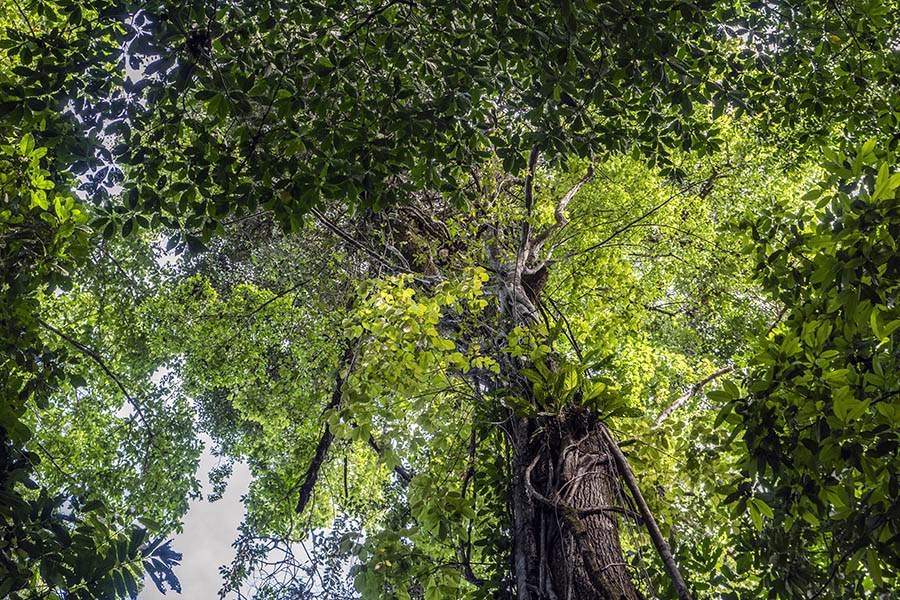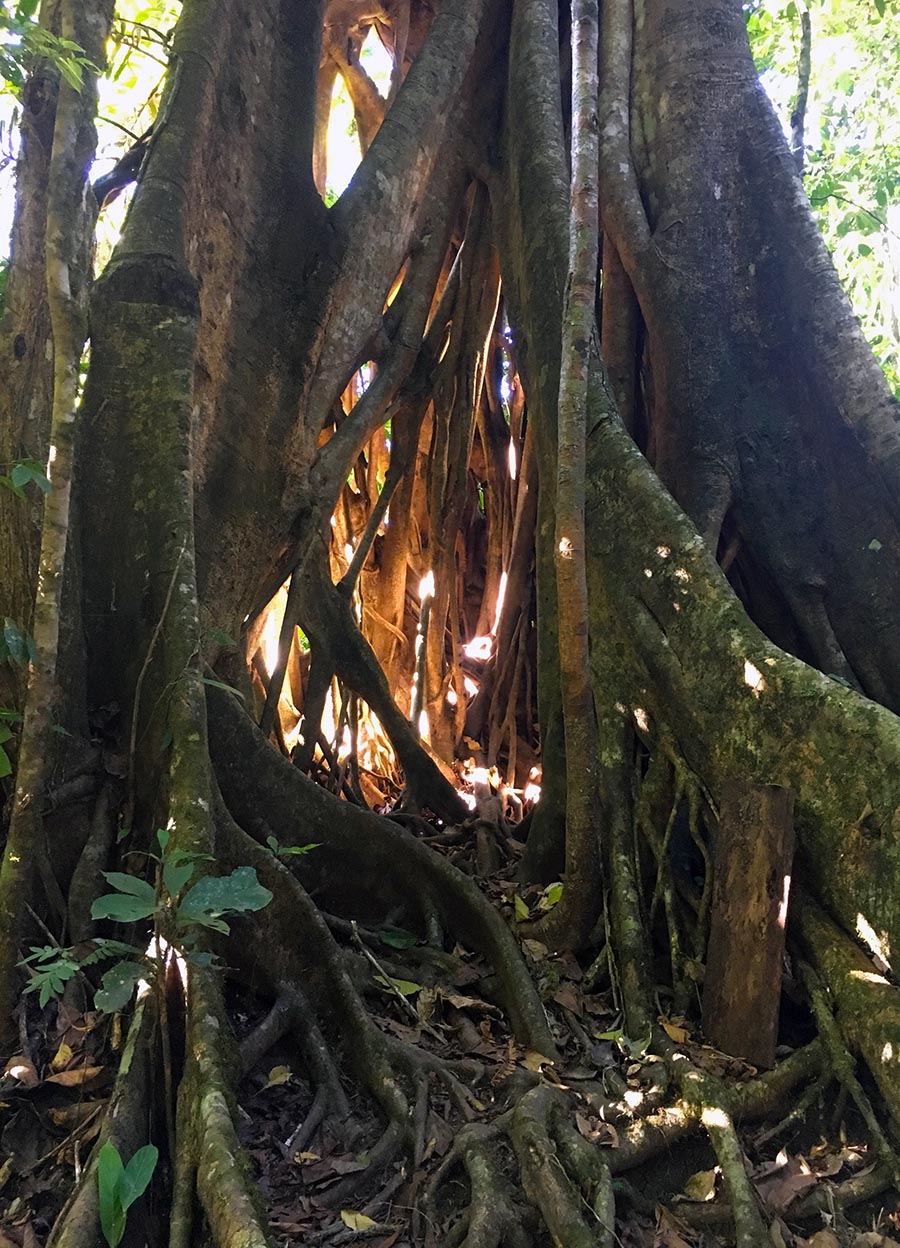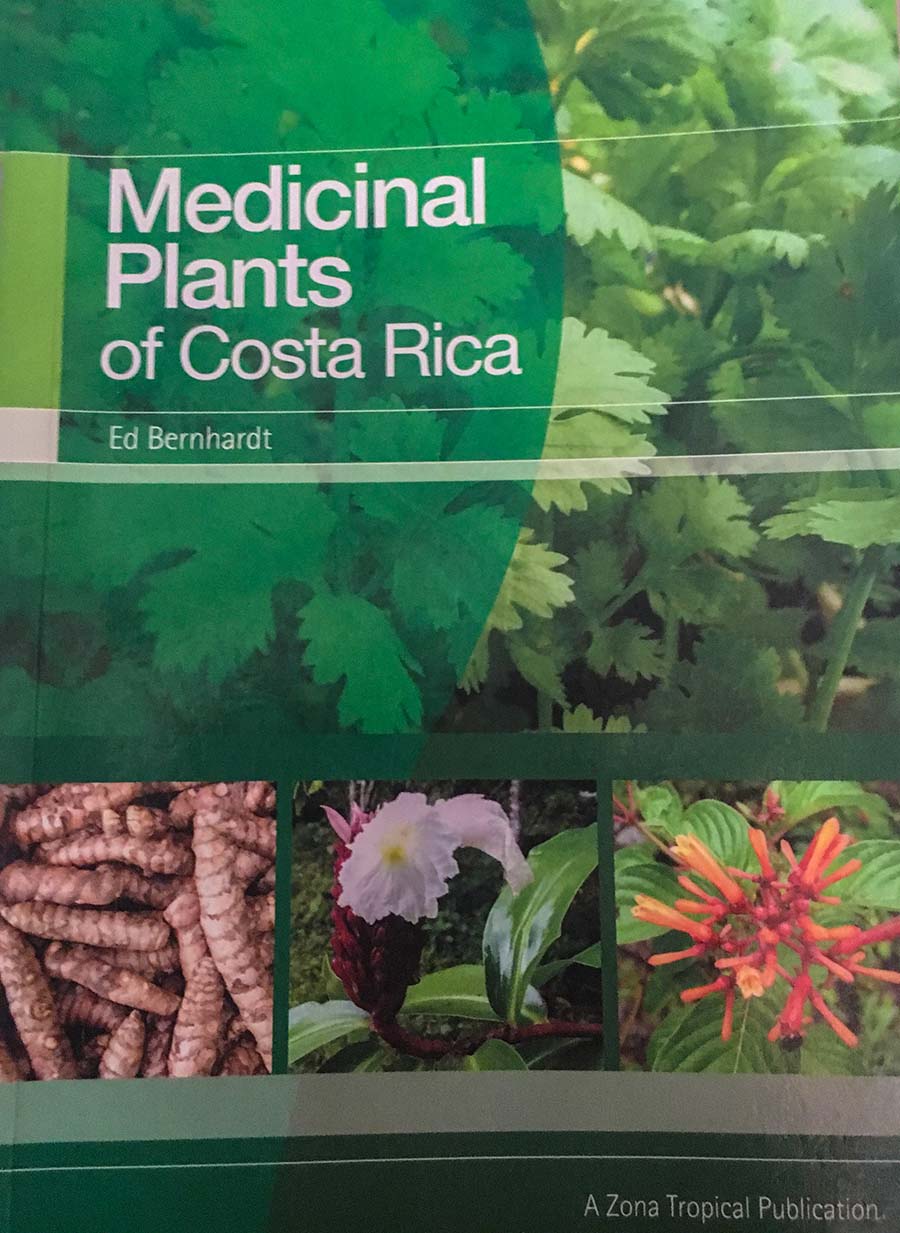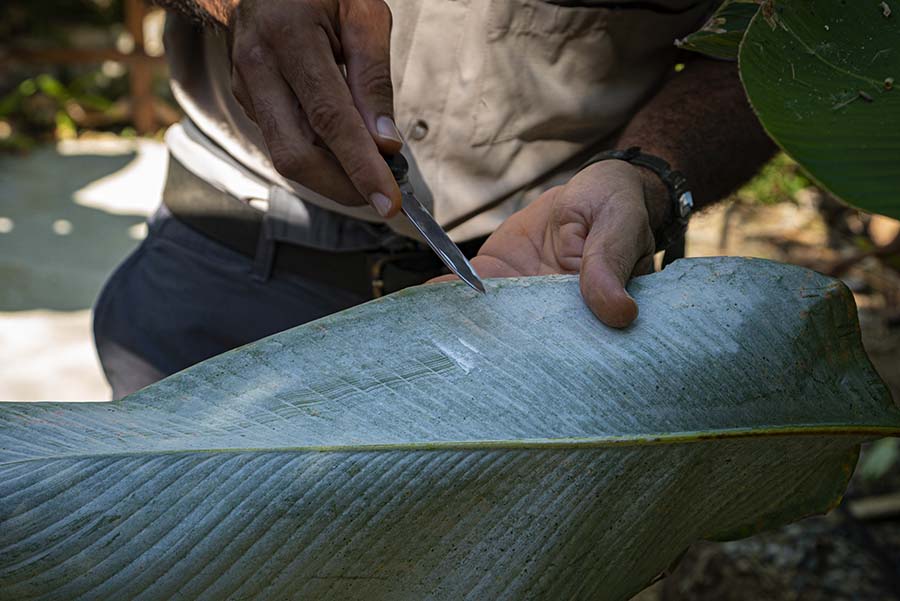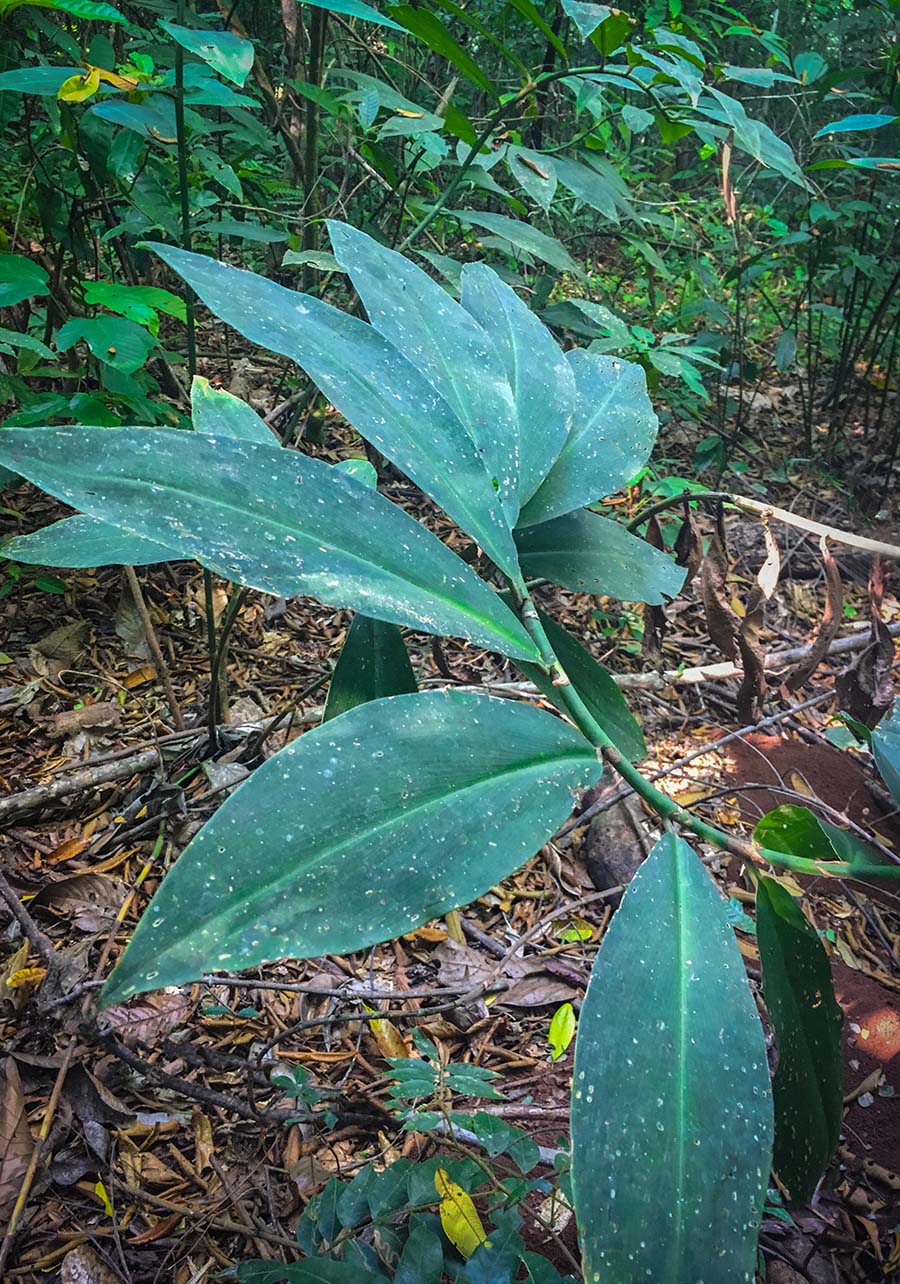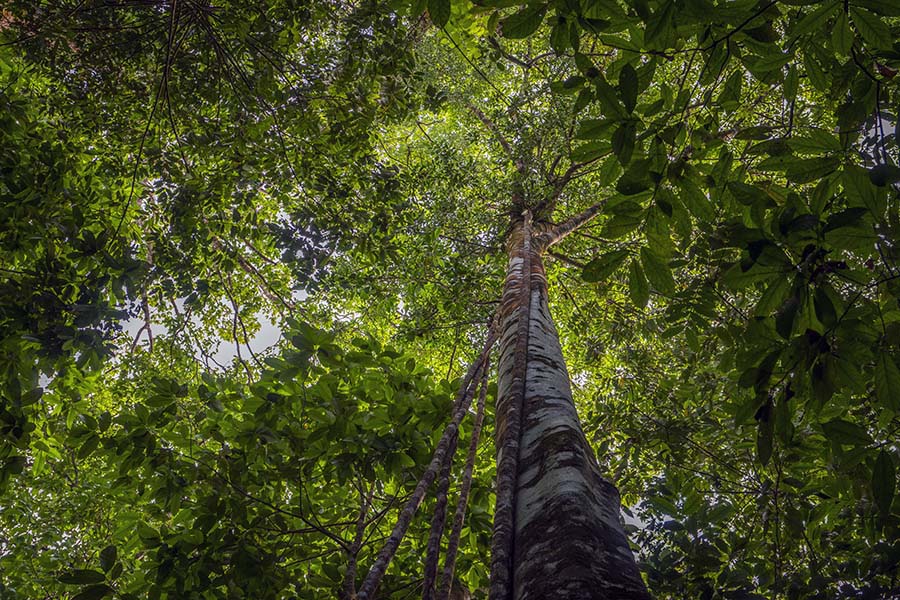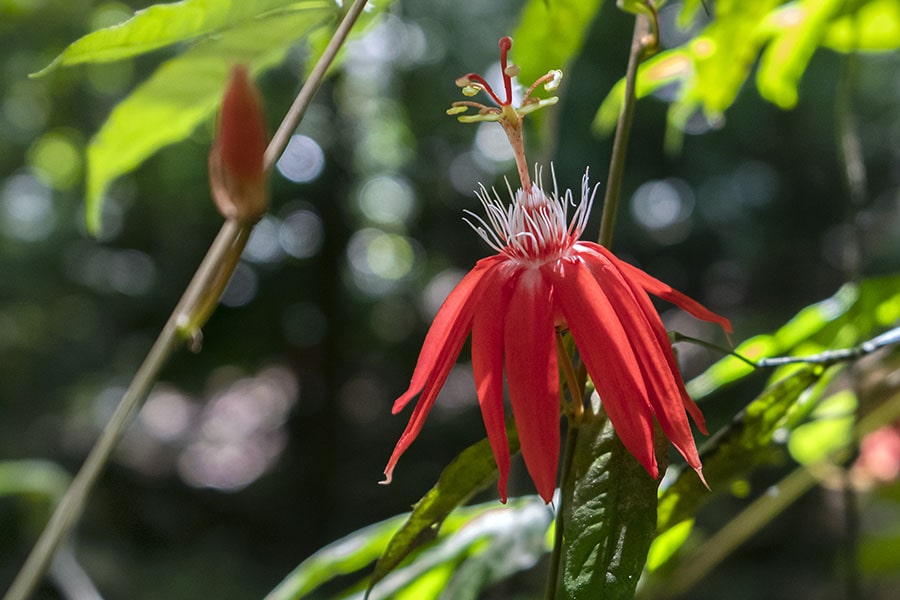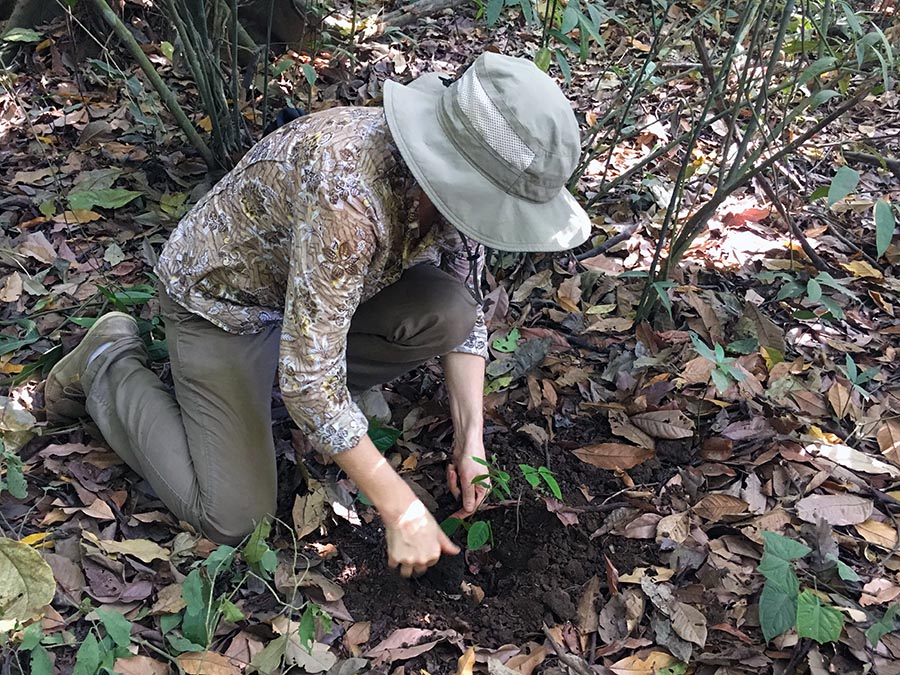On the latest trip to Southern Costa Rica, we spent a few days botanizing along the trails of Matapalo Beach on the remote Osa Peninsula. Experienced local nature guides from the Lapa Rios Ecolodge taught us how to recognize some of the area’s most remarkable plants and trees and to appreciate Costa Rican rain forest’s medicinal bounty. Planting a “suicidal tree” at the end of the stay felt like a tiny contribution to this last stronghold of the Pacific rain forest.
“A traveler should be a botanist, for in all views plants form the chief embellishment”
Charles Darwin
Matapalo – What’s in the Name?
Matapalo is a local name for strangler fig (Ficus species) and on Osa Peninsula these trees are a rather common sight. A large number of local birds and some animals feed on ficus fruits and spread around their seeds. Of the 150 Ficus species living in America, many (if not most) have so called “strangler habit”. On Osa Peninsula, you are likely to encounter Ficus obtusifolia and Ficus nymphaeifolia, “hugging” other trees. The host tree eventually dies by shading, trunk constriction and root competition. However, “strangling” is rather common growth strategy in tropical lowland rain forest and cloud forest and is not at all limited to ficus trees. In some areas of rain forest, as much as 15% of canopy trees is estimated to host stranglers and similar hemiepiphytes.
Botanical Resources for Osa Peninsula Flora
To fully appreciate plant diversity in this corner of Costa Rica, check out Vascular Plants of the Osa Peninsula, Costa Rica website. This collection contains a comprehensive “check-list” representing 2240 species, 950 genera, and 167 families with sighting maps of thousands of local plant records. A more compact illustrated field guide compiled by local and visiting (from the Missouri Botanical Garden) botanists offers images of ficus spp. and other charismatic plants from the Moraceae family, which you are likely to see on Osa Peninsula.
Guided Botanical Tours on Matapalo Beach
To learn more about the unique flora of the region, we signed up for a couple of local hikes with Lapa Rios. This is one of the National Geographic’s Unique Ecolodges, which has access to several miles of privately owned trails cutting through the primary and secondary wet lowland rainforest. Most importantly, they graciously allows travelers who are not staying at the lodge on their trips if spots are available. Otherwise, you can also arrange for rather affordable private tours with their nature guides.
During our one-week stay in Cabo Matapalo, we had no problems signing up for several of their small-group nature walks (they can include up to ten people, but most had three to five). To learn more about the captivating history of Lapa Rios and its environmental mission, check out this post about the “Pigs, Twigs and Garbage Tour”.
The Medicine Walk
For the last 30 years, Costa Rica has been actively involved in “bioprospecting” of its botanical riches. The purpose of which has been to identify and screen plants for medically active compounds in search for yet undiscovered medicines. At that time, it was estimated that about 10 % of plants tested on the basis of documented traditional medical use contained therapeutically active agents in commercial amounts. Of these, 10 % will exhibit unique medicinal effects. This odds ratio of 1:100 is strikingly higher than the effectiveness of a typical all-synthetic screening program estimated at 1:23,000. Back then, it was estimated that about three-quarters of plant-derived drugs were discovered through folk usage.
To learn about the local ethnobotanical traditions, we signed up for a 2-hour Medicine Walk with Jeffery, a local guide from Lapa Rios. We started this highly interactive short hike (the Medicine trail itself is only 1 km long) in a small garden right behind the main lodge.
“Baby Powder” Plant
Equipped with “Medicinal Plants of Costa Rica“ book, Jeffery brings our group of five to a patch with lavishly growing Calathea lutea (the common Spanish name is Bijuaga). These large-leaved herbaceous plants are from a pan-tropical Marantaceae family with over 60 different Calathea species described just in Costa Rica (one third of which are endemic or regional endemic). They are also common in the understory vegetation of the wet lowland rainforest on Osa Peninsula and several species are local endemics.
The wax covering the silvery-white undersurface of Calathea has been used by locals as a talcum substitute in baby care and a general-purpose lubricant. The indigenous peoples have also adopted it in the “curing” or waterproofing of bowstrings, in basketry. With a few gentle strokes of a pocketknife, Jeffery scrapes off a heap of white powder from the shiny undersides of a leaf. The average yield of wax from large-leaved species, such as C. lutea can be as high as 0.7 gram per leaf!
Carpenter´s Bush – a Lady Medicine and More
Here is something else. Justicia pectoralis, locally called as “tilo or carpenter’s bush”, is another medicinal plant with a long history of traditional use. In Costa Rica, leaf extracts are sold as an over-the-counter sleep aid, whereas on the markets, dried plants are advertised as a treatment for menopause and other “lady ailments”. In addition to its mild sedative and estrogenic qualities, it is also believed to have anti-inflammatory effects.
Follow the Medicine Trail of Rain Forest
After spending half an hour botanizing on the grounds of the ecolodge, we took a short ride to the head of the Medicine Trail and started our hike in the rain forest. There were “discoveries” on every corner. We paused briefly by a Jackass bitters (Neuroloena lobate). Resembling our ordinary ragweed, this plant is used as a natural remedy against intestinal parasites, for acid reflux or indigestion and, as a tonic for traveler’s diarrhea.
Next in line was a “spiral ginger” plant Costus spp. (from Costaceae) with its deep-green leaves forming a neat spiral. Although few docs believe in its anti-lithic magical properties, the plant has been used as a traditional medicine for kidney stones and other ailments of the urinary system. Ethnobotanical fancy aside, Costus represents a very interesting diverse group of Osa Peninsula plants. Originally (millions of years back) from Africa, this family is now counting over 100 mostly neotropical species. A dozen different Costus species, including several regional and Osa Peninsula endemics (such as C. osae, C. ricus and C. stenophyllus), were reported by David Skinner in the Golfo Dulce area. Interestingly, the majority of the locally growing Costus have evolved as Ornithophilous species, which means that they are pollinated by hummingbirds as opposed to bees.
Our next stop along the trail is a massive Kerosene tree (Hymenaea courbaril, also called stinking toe), which can reach the height of 150 feet and more, supporting its crown with a large trunk. Jeffery makes a tiny cut through its bark, letting a drop of sap run down the blade before setting it on fire. The highly flammable ‘fragrant’ resin is believed to defend this neotropical native tree against insects, herbivores and pathogenic fungi. This sticky gum has been used by locals as an anti-itch and anti-mosquito remedy. Already in the Pre-Columbian time, it was collected by the aborigines of Costa Rica and Panama and used as incense, varnish, and for carving amulets.
Arboreal Wonders of the Primary Rain Forest
Next day we continued our botanical explorations (this time with Edwin, see a very short video from the hike) on the Osa Trail, which is over 3 km long, but is largely downhill or flat. It covers areas with old secondary growth as well as the original primary rain forest with magnificent native trees, many of which are several hundred years old.
Less than half of the remaining forest on Osa Peninsula is old growth, but the region still has an astounding plant diversity and some tallest trees in Central America. 5% of the tree species are endemic and a as much as a quarter of as regional endemics, growing only in Panama, Costa Rica and Nicaragua.
Edwin introduced us to a native Diesel tree (Copaifera camibar), which produce resin similar to that of the Kerosene tree, a majestic Mahogany (Carapa guianensis) and an Abrojo (a vernacular name of Sloanea spp) with a high buttress hugged by lianas. The lush-green understory of the rain forest was occasionally dotted by the splashes of red Passionflower vines (Passiflora spp). In some areas along the trail, the forest floor was littered by yellow flowers of the giant Ajo or Garlic tree (Caryocar costaricensis). The blossoms give off The scent of these blossoms, which was reminiscent of garlic gave this regional endemic its name.
Along the trail, we also got a good look of a wild Theobroma cacao, which the indigenous peoples of the Central America, such as Maya, Toltec and Aztec, turned into “food of the gods” before sharing it with the rest of the world. For a moment, we stopped and craned our necks by an old Ceiba and a Wild Cashew (Anacardium excelsum) trees towering over a steep hillside, to appreciate the share size of these giants, the tallest trees of the Osa Peninsula.
Planting a “Suicidal Tree” Reseco
After the botanical experiences in the woods, it seemed only natural to sign up for “Plant a Tree” (another “green activity” offered by Lapa Rios ecolodge). A symbolic, yet personally meaningful attempt to leave behind a positive mark in the rain forest, which we all found so “therapeutic”. Among the seedlings lined up at “the tree nursery” by the main lodge, the intriguing description of the “suicidal tree” reseco stood out. Crowned with just a few bright-green pinnate leaves on longer petioles, these baby plants looked rather unremarkable.
Edwin explained that reseco (Tachigali versicolor) trees are known for their unusual life cycle: they flower and produce seeds once in a lifetime, then shed their leaves and die. This mode of reproduction (monocarpy, from Greek monos (single) and karpos (fruit)) is very rare among long-lived trees. The remarkable natural history of this tree was first described 50 years ago by Robin Foster, an ecologist from the Fields Museum’s Environmental Conservation Program. He also discovered something else: the ubiquitous leaf-cutter ants never prayed on the “suicidal tree” before the flowering period. This is because the tree produced the defensive anti-fungal compound, whereas the ants relied on fungus as their food source. However, shortly after the fruits were produced and dispersed, the trees would get invaded by ants and other insects and succumb within a year. Not surprisingly, the indigenous people in the Amazon have traditionally used reseco leaf extract as an anti-fungal remedy. Reseco belongs to the pea (legume) family and is one of the regional endemics restricted to the Pacific lowland forest from Costa Rica to Western Columbia.
One might ask why some trees became monocarpal and how they remained successful in the wild? Scientists, who have studied these trees, believe that monocarpism developed as an adaptive mechanism. Higher growth rate and earlier reproductive maturity might make up for the 100% mortality of adult reseco trees after a single reproductive season.
Unlike majority of other tropical trees, reseco seedlings are shade-tolerant (and are more likely to survive because less grazing occurs in the shaded areas). They are more likely to survive growing under the canopy of trees from the same species, but can also survive for many years in the understory of other trees while waiting for a gap in the canopy to emerge. Based on this knowledge, we decided to give it a shot and planted the young reseco tree in secondary forest with gaps in the canopy. Keep our fingers crossed.

